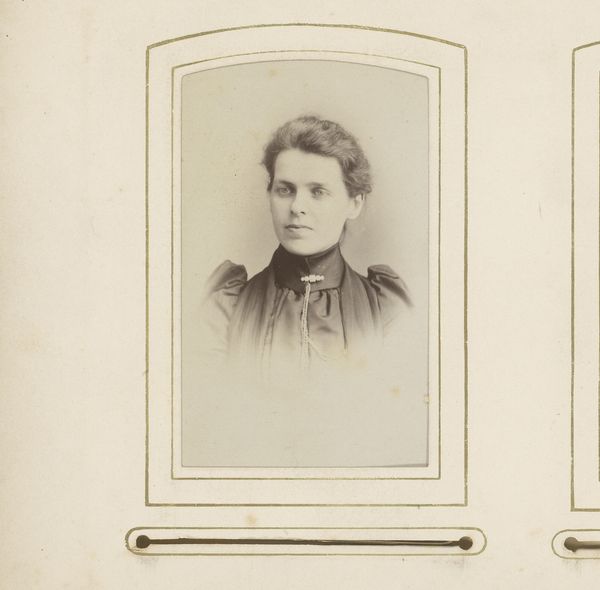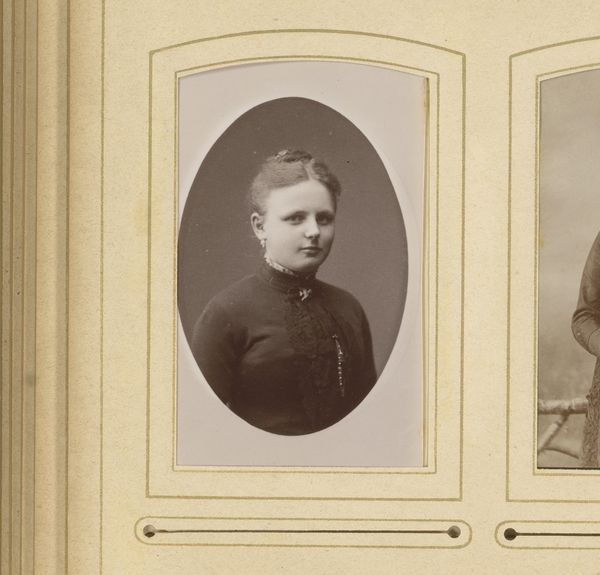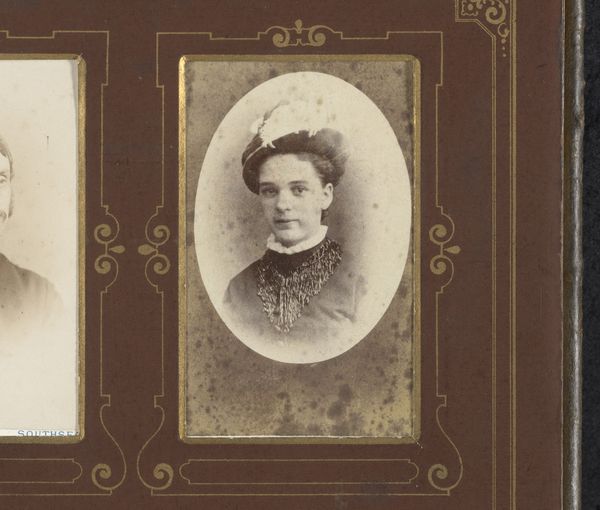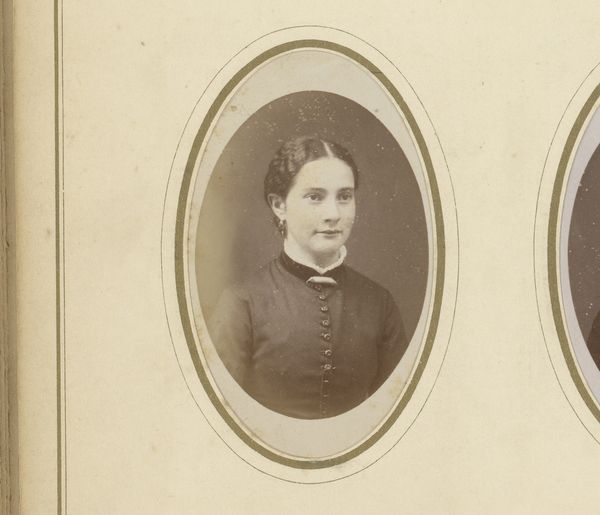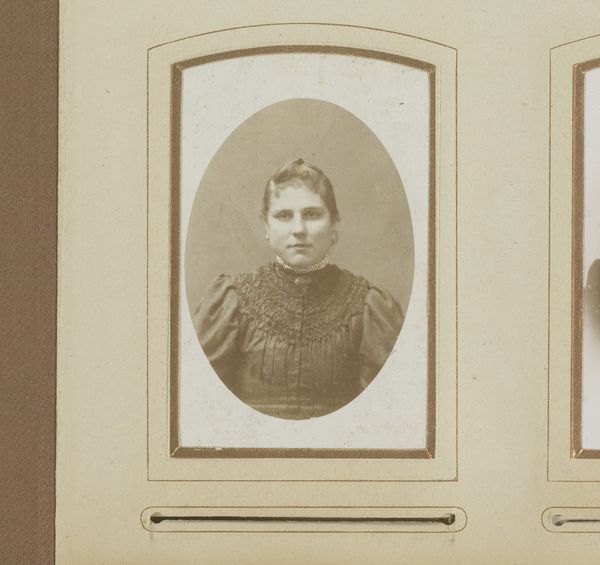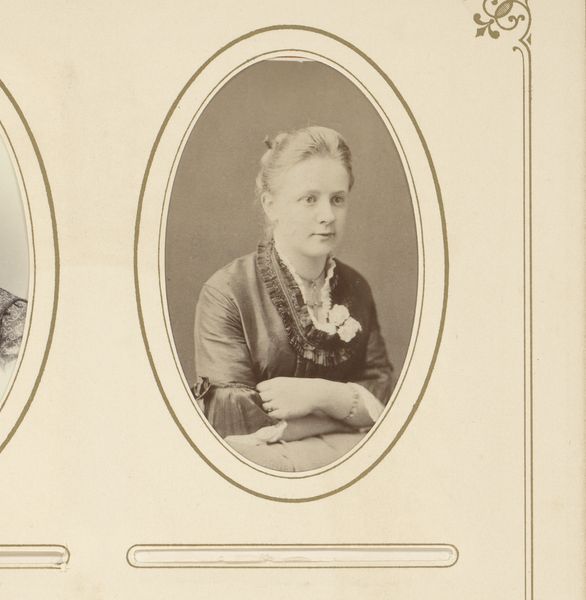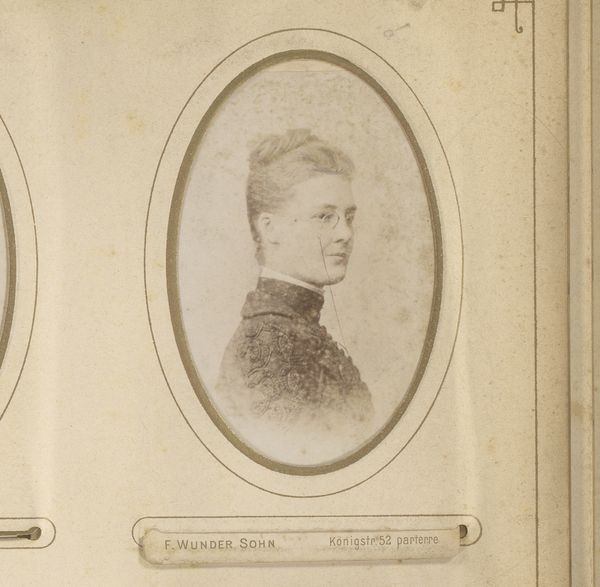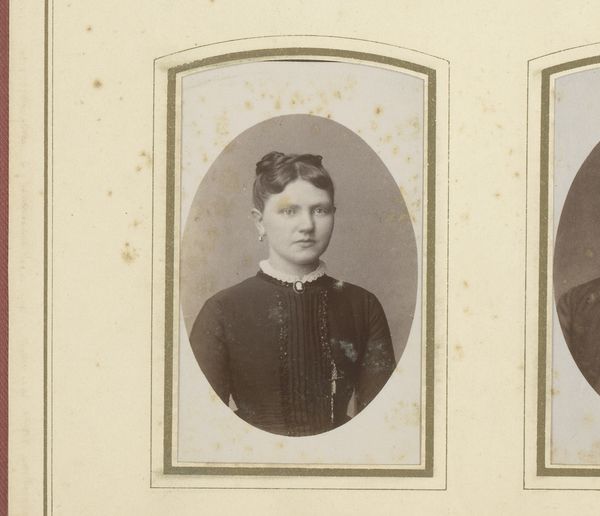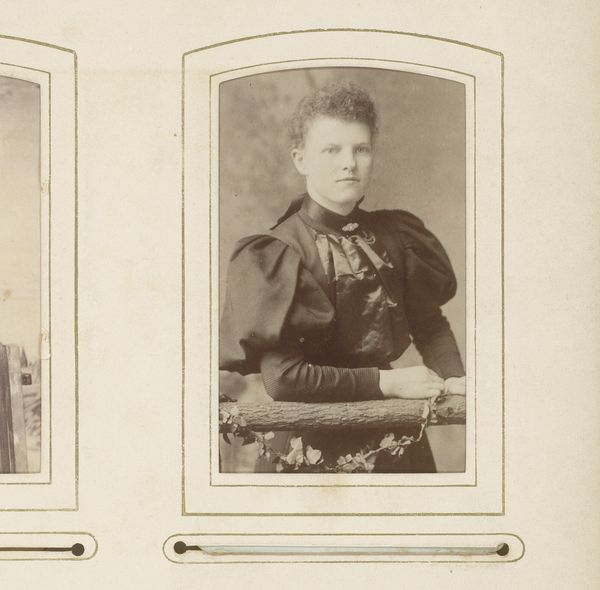
#
aged paper
#
toned paper
#
light pencil work
#
parchment
#
pencil sketch
#
charcoal drawing
#
charcoal art
#
old-timey
#
19th century
#
portrait drawing
Dimensions: height 105 mm, width 63 mm
Copyright: Rijks Museum: Open Domain
Curator: This is an intriguing work—an undated portrait from circa 1870 to 1874, currently held in the collection of the Rijksmuseum. The artist remains unknown, sadly. It’s rendered with charcoal and pencil on toned paper. Editor: Toned paper… yes, that definitely gives it a kind of sepia whisper, doesn't it? The face, though, seems strangely...sharp? It’s like she's about to tell you exactly what she thinks, and you're not going to like it. Curator: Absolutely. The portrait offers a wealth of period detail. The sitter's dress, her hair styled tightly back, the almost severe formality—these speak to very specific Victorian codes of conduct. Notice too how the artist uses light and shadow. Editor: To a frankly unnerving effect! It’s not just a likeness; there’s an emotional weight pushing through. That direct gaze – unnerving – almost confrontational – and I can't help but think of the roles women were expected to play then and how very starchy that expectation looks here. Like a corset for the soul! Curator: The clothing can often be considered a direct language for decoding women’s social standing. The severe clothing represents status but also repression, yet a small delicate flower is pinned at her chest. Perhaps the flower hints at sensitivities, aspirations, rebellions otherwise suppressed in service to codes. Editor: A tiny, subversive blossom of defiance, maybe! She appears at first rather typical for her time – but look longer and that face implies layers. Perhaps she’s simply bored witless at having to pose. I certainly would be! Curator: And while the portrait remains unattributed, these qualities underscore how portraits transcend mere depiction. They offer us invaluable insights into societal expectations and into the psychological landscape inhabited by both the artist and the sitter. We still value this visual tradition precisely because it captures so much meaning that remains timeless. Editor: Exactly. Forget fleeting trends; the best images, like this one, remind us of our shared human condition—our burdens, beauty, resistance, dreams... You see all that in a well-observed face.
Comments
No comments
Be the first to comment and join the conversation on the ultimate creative platform.
